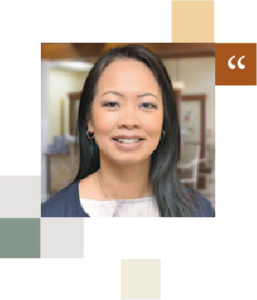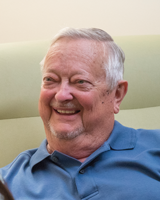May is National Physical Fitness and Sports Month!
Six Ways to Achieve Your Fitness Goals in May
Did you know that regular physical activity increases your chances of living a longer, healthier life? It also reduces your risk for high blood pressure, heart disease, some types of cancer and many other chronic conditions.
May is National Physical Fitness and Sports Month, so there is no better time to get moving! The Physical Activity Guidelines for Americans recommend that adults:
- Aim for 2 hours and 30 minutes of moderate aerobic activity each week, like walking fast, dancing, swimming and raking leaves.
- Do muscle-strengthening activities, like lifting weights or using exercise bands – at least 2 days a week.
Here are six ways you can rise to challenge and live a healthier, active life.
- Register for a Body Composition Analysis Screening
Many of us focus on our weight as a key indicator for a healthy body, but that is only one piece of the puzzle. A full body composition analysis will show you how much of your weight is made up of fat, water, muscle, bone or body mass – and compare it to healthy levels for your age and gender.
During a free body composition analysis, in less than 10 seconds you will receive a print out of your weight, body mass index, body fat percentage, basal metabolic rate, fat mass, fat free mass and hydration level. One of our friendly representatives will help you interpret the data and provide advice for improving or maintaining a healthy composition.
Body composition analyses are open to the public. You do not have to be a patient or a resident of The Villages to participate. You can walk-in during a scheduled screening time and do not need to make an appointment.
May Walk-In Screening Times
Mulberry Care Center
8877 SE 165th Mulberry Ln.
Tuesday, May 29th from 2:00 to 4:00 PM
To find other classes and learning opportunities, please visit our Learning Center.
Not permitted for those with implanted electric devices (pacemakers, etc) or pregnancy.
- Register for a free Seminar or Boot Camp
Whether you’re currently a couch potato or a fitness fanatic, the Exercise and Physical Activity seminar will provide you with resources to round out your exercise program and stay focused on your goals.
The Healthy Weight Loss Boot Camp is an intensive two-hour session, learn successful healthy weight loss strategies including exercise, nutrition and healthy eating out.
All of our courses are free to the entire community. You do not have to be a patient or be a resident of The Villages to attend, so please remember to bring a friend.
To register, please visit our Learning Center.
Healthy Weight Loss Boot Camp
In this intensive two-hour session, learn successful healthy weight loss strategies including exercise, nutrition and healthy eating out.
Colony Care Center
Tuesday, May 15th from 9:00 to 11:00 AM
Register Now >>
- Get to Know Our Orthopaedic Team
Living with pain can be frustrating, especially when you are trying to live a healthy, active lifestyle. From sprained ankles to knee replacements, we’ve got you covered head to toe!
We have four highly trained, Board Certified Orthopaedic Surgeons and a skilled team dedicated to heal you quickly so you can enjoy your lifestyle.
We are starting to do a lot of things since my hip surgery. Thee limitations are going away rapidly. I’m able to golf. Now it’s going to be the fun years. Start living life!
Thomas Karpinski, Villager
Learn More >>
- Prevent Injuries by Exercising Safely
As you get older, your body doesn’t repair as quickly as it used to. That means extensive exercise can be tough on your body.
“I see a lot of patients who jump into their new active lifestyle too quickly and suffer injuries, like tendonitis or fractures,” says Dr. Sullivan, an orthopaedic surgeon at The Villages Health.
Dr. Sullivan recommends easing into a new active routine. “Don’t start with a full schedule right away. Limit hard workouts to 2-3 times per week, and give you’re your body a chance to rest and recover in between.”
- Get a Bone Density Scan
A bone density scan is a great way to measure the strength of your bones and determine your risk for fractures. These scans are highly recommended for women over the age of 55, especially those with a risk of osteoporosis and for men and women on certain medications or conditions.
Your primary care doctor can determine your need for a bone density scan
If you are an existing patient, please call your care center. If you are a new patient, you can learn more by calling 352-205-4032.
With these six tips you are now empowered to reach your fitness goals! Keep on moving!
Get Moving in May with These FREE Fitness Resources!
Who says getting older means slowing down? The Villages® offers so many opportunities to have fun and stay active, and we want to help you enjoy every minute. May is National Physical Fitness month, so join us for a class on exercise and physical activity.
All resources are free to the entire community. You do not have to be a patient or a resident of The Villages to attend. So don’t forget to invite a friend.
Exercise and Physical Activity
Whether you’re currently a couch potato or a fitness fanatic, this seminar will provide you with resources to round out your exercise program and stay focused on your goals.
Creekside Care Center
Friday, May 18th at 10:00 AM
Register Now >>
Colony Care Center
Tuesday, May 22nd at 8:30 AM
Register Now >>
5 Fitness & Exercise Tips for Active Seniors
How to Prevent Injuries While Living a Healthy, Active Lifestyle
Ease Into Your New Active Lifestyle
When you move to The Villages® and surrounding community it is such an exciting time. There is so much for you to do and explore. Your first reaction might be to jump in full force with new activities.
“I see a lot of patients who jump into their new active lifestyle too quickly and suffer injuries, like tendonitis or fractures,” says Dr. Sullivan, an orthopaedic surgeon at The Villages Health.
Dr. Sullivan recommends easing into a new active routine. “Don’t start with a full schedule right away. Ease into it.”
Limit Hard Workouts to 2-3 Times Per Week
“The active senior should be cautious not to overuse their body parts,” says Dr. Sullivan. “In the past, you might have been able to complete hard workouts 4-6 times per week, but you may need to start limiting them to 2-3 times per week.”
Integrate Moderate to Light Exercises on Off Days
You can integrate lighter workouts on your off days for an active rest. “Tai chi and core exercises are great for keeping your strength and balance,” says Dr. Sullivan.
Those line dances in the square aren’t just for entertainment, they are also great for active recovery.
Don’t Forget to Rest In Between Workouts
As you get older, your body doesn’t repair as quickly as it used to. That means extensive exercise can be tough on your body. “You need to give your body a chance to rest and recover in between workouts,” says Dr. Sullivan. “Listen to your body.”
Talk to Your Doctor About Pain or Injuries
If you experience consistent pain during or after a workout, or suffer from an injury, you may need to consult an orthopaedic specialist.
“We recommend talking to your primary care doctor first, and he or she will recommend next steps,” says Dr. Sullivan.
The orthopaedic specialists at The Villages Health are here to help, from tendinitis to sprains and fractures; we’ve got you covered. If you are interest in learning more about our service, please call 352-205-4032.


